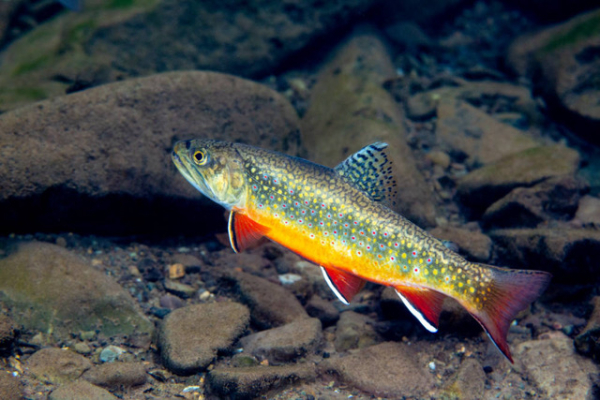Research on the Rapidan WMA: Brook and Brown Trout Interactions Revealed


About the time tulip poplars, oaks, maples, and hickories are burnished the color of an ending season, brown trout and brook trout from Georgia to Maine turn their attention to a new beginning: procreation. The colorful flanks of these trout mirror the spectra of leaves that carpet the floor of the Appalachian Mountains. Brown trout sport a warm honey beneath black peppercorn spots all covered in a chrome sheen. Worm-like markings lay over the dark olive backs of brook trout, flanked with shades of yellow specks punctuated by drops of ox blood, each fish dotted in its own constellation.
Brook trout are native to streams that vein over Appalachia; brown trout are a European import, well established for decades. With shortening shadows and cooler temperatures, both species lay their eggs in gravelly redds where oxygen-rich water bathes through them the winter-long as they incubate. Brown trout may have a competitive edge over the native brook trout, particularly at lower elevations where warmer water favors brown trout. Other interactions between the two species are not well understood.
To learn more about how brook trout fare over a long span of time in the presence of brown trout, biologists John Odenkirk and Mike Isel with the Virginia Department of Wildlife Resources (VDWR) examined a large amount of data—nearly 25 years’ worth of information—on brook and brown trout in the Rapidan and Conway rivers of northern Virginia. Sport Fish Restoration dollars—federal excise taxes paid by fishing tackle manufacturers—funded their work. Odenkirk and Isel published their findings in the scientific Journal of the Southeastern Association of Fish and Wildlife Agencies, March 2022 issue. Read more







